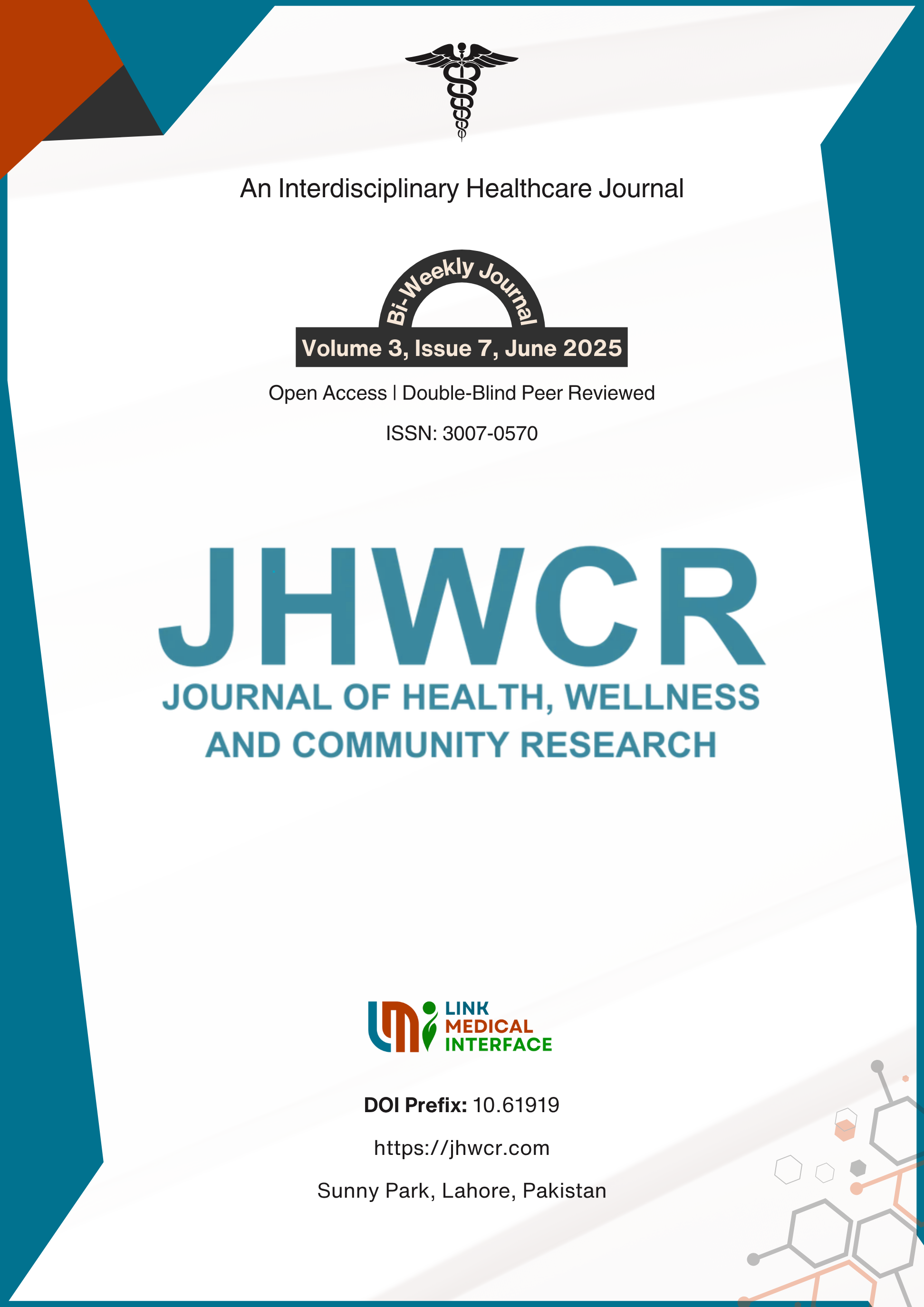Prevalence of Kinesiophobia in Fibromyalgic and Non-Fibromyalgic Pregnant Females: A Cross-Sectional Study
DOI:
https://doi.org/10.61919/ewkdyg35Keywords:
Kinesiophobia, Fibromyalgia, Pregnancy, Fear-Avoidance, Chronic Pain, Musculoskeletal Disorders, Maternal HealthAbstract
Background: Kinesiophobia, a disproportionate fear of physical movement due to anticipated pain or injury, is common in chronic pain syndromes such as fibromyalgia (FM). Pregnancy imposes unique biomechanical and psychosocial stressors that may amplify this fear, yet the combined impact of FM and gestational context on kinesiophobia remains underexplored, particularly in low-resource settings. Objective: To assess the prevalence of clinically significant kinesiophobia in pregnant women with and without FM, examine differences by parity, and characterise pain distribution among FM cases. Methods: A cross-sectional survey was conducted among 119 pregnant women attending the obstetrics outpatient clinic of Kulsoom Bai Valika Hospital, Karachi, from November 1, 2023, to January 31, 2024. Inclusion criteria were age 18–45 years and informed consent; exclusions included malignancy, acute fracture, neurological or psychiatric disorders. FM was diagnosed using 2016 ACR criteria; kinesiophobia was assessed via the 17-item Tampa Scale (TSK, score >37 = high fear). Data were analysed using SPSS v29.0. Pearson’s χ² test and odds ratios with 95% confidence intervals (CI) were calculated. Ethical approval was obtained from the Jinnah Sindh Medical University IRB (JSMU 2023 207) in accordance with the Helsinki Declaration. Results: FM was present in 25.2% (30/119) of participants. High kinesiophobia occurred in 66.7% of FM cases versus 49.4% of non-FM cases (OR = 2.05, 95% CI: 0.86–4.85, p = 0.102). No significant differences were observed by parity. Common pain sites in FM were the lower back (73%), lower leg (60%), and abdomen (53%). Conclusion: Kinesiophobia is prevalent among pregnant women and more frequent in those with FM, although not statistically significant. Routine screening and targeted antenatal counselling may mitigate fear-avoidance behaviours and improve maternal health outcomes.
Downloads
Published
Issue
Section
License
Copyright (c) 2025 Journal of Health, Wellness and Community Research

This work is licensed under a Creative Commons Attribution 4.0 International License.


